A collection of conversations with a diverse range of local and regional creatives
Library Conversations for SGABF2020
We examined the systems that support art book making and independent art book publishing in Singapore and the region.
A Closer Look for SGABF2019
We gathered perspectives on our zine and art book culture, and discuss the possibilities of self-publishing today.
21 Creatives for SGABF2018
We sat down with 21 creatives of various disciplines to learn about their practice and asked each of them to fill up a blank page in a notebook.
SGABF: Tell us a little about you as an artist and the philosophy behind your work.
Luca Lum (LL): My work so far tends to manifest as texts and performances. Some recurring themes are otherness, disclosure, double-agency, intimacy, and desire. Since 2016, I’ve been running an independent studio, library, and project space called soft/WALL/studs with several others. Running it is also a kind of work or research process, that recalibrates my own boundaries and is also another way of hopefully creating work that resonates on other registers, and which is only made possible with a kind of gathering of others. I have led a reading group here, as well as organised events for others.
When it comes to starting a project, be it an essay, poem, or performance, I am drawn to a kind of “thickness”. I find that the richest and densest form of writing comes to me imagistically or in a few lines that get stored away until the moment arises where I want to work on something. I would go back to backlogs and find what resonates with me the most and use it as a base. Over time a thing will gain a kind of “density”, but also a series of connections. I try to think with my entire body and/or a prosthesis, or through dialogues with others. Even before writing, I suppose I would say my creative process begins by being pricked by something.
I am interested in finding an oblique angle to a thing and bringing together phenomena that appear disparate. I like to create situations of discomfiting intimacy. I want to feel like I have stretched myself, and sometimes that can be fulfilled just in the intensity of a process. Vulnerability is a big part of the intensity. Sometimes it is about allowing myself to be ugly or incoherent, and sometimes the desire is in the opposite direction, which is to be very edited and specific. You do not always know the value of a thing, and often you cannot know. There has to be room for you to feel kind of raw, to try to be another way. And you have to have peers to test this with.
When it comes down to it, the work I feel energised by should aim to hit a variety of tones, taking into account all possible depths and dimensions. I want a kind of estrangement too because what I am trying to get at are perspectives that are very much part of our realities, but which we might not necessarily recognize because they seem inchoate for reasons of being inadequately surfaced, or are very distributed in space and time — or at least appear to be.
SGABF: Focusing on corroborative and collaborative work seems to be an essential factor in your works, as it is with exposing the existence of seemingly opposing terms and ideas that could exist on the same plane. Why is that important to you?
LL: Collaboration is a way I extend and deform how I am in the world. I recognize that my experience is limited.
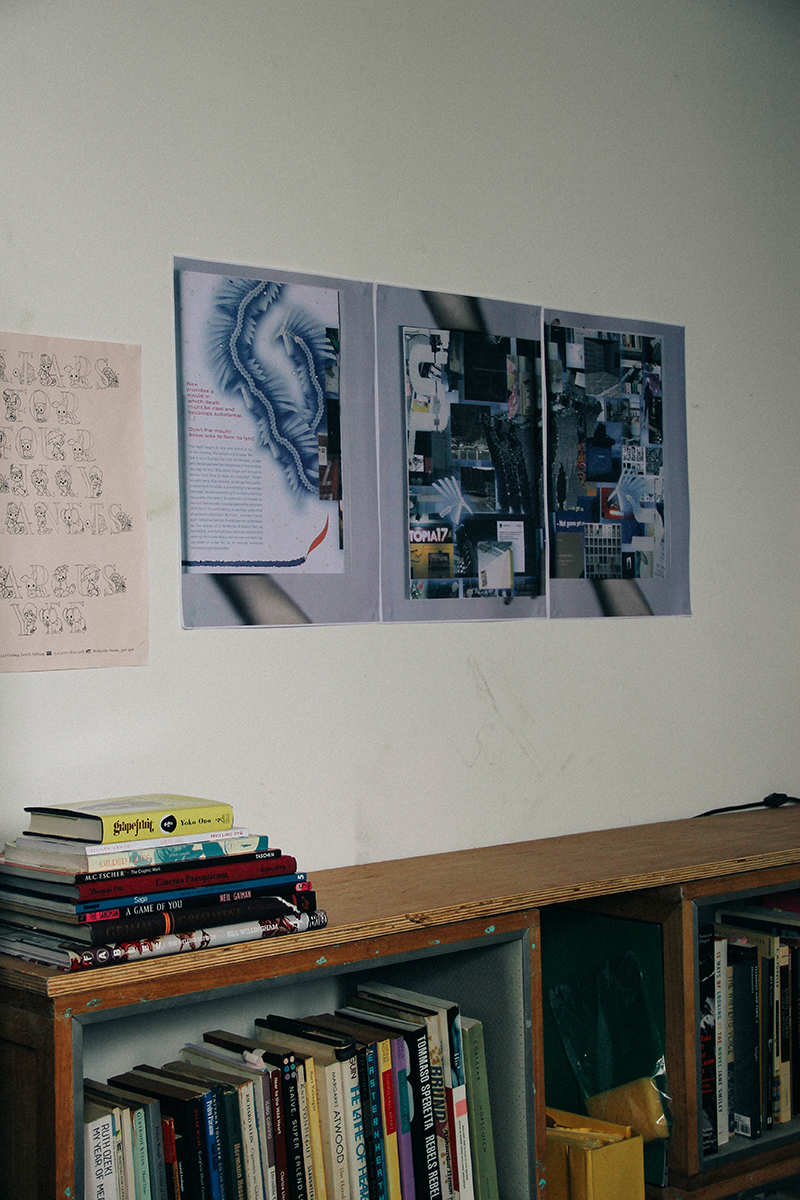
Photo Credit: Courtesy of Artist
And to segue into the point about considering contradictions, it is about embracing multiplicity to reach for a deeper, richer, more complex, and challenging project. Multiple states exist at any one point, one state enables another, and I just try to capture that simultaneous possibility. Parallel universes are not so inimical to our lives, they are not just the terrain of fictions. They are in fact so braided into our presents. It is like an elbow, just an underside that you do not really see. Once you shift your perspective, your idea of scale and relations change. It is about considering things in various scales and accepting paradoxes for a full-on stranger experience.
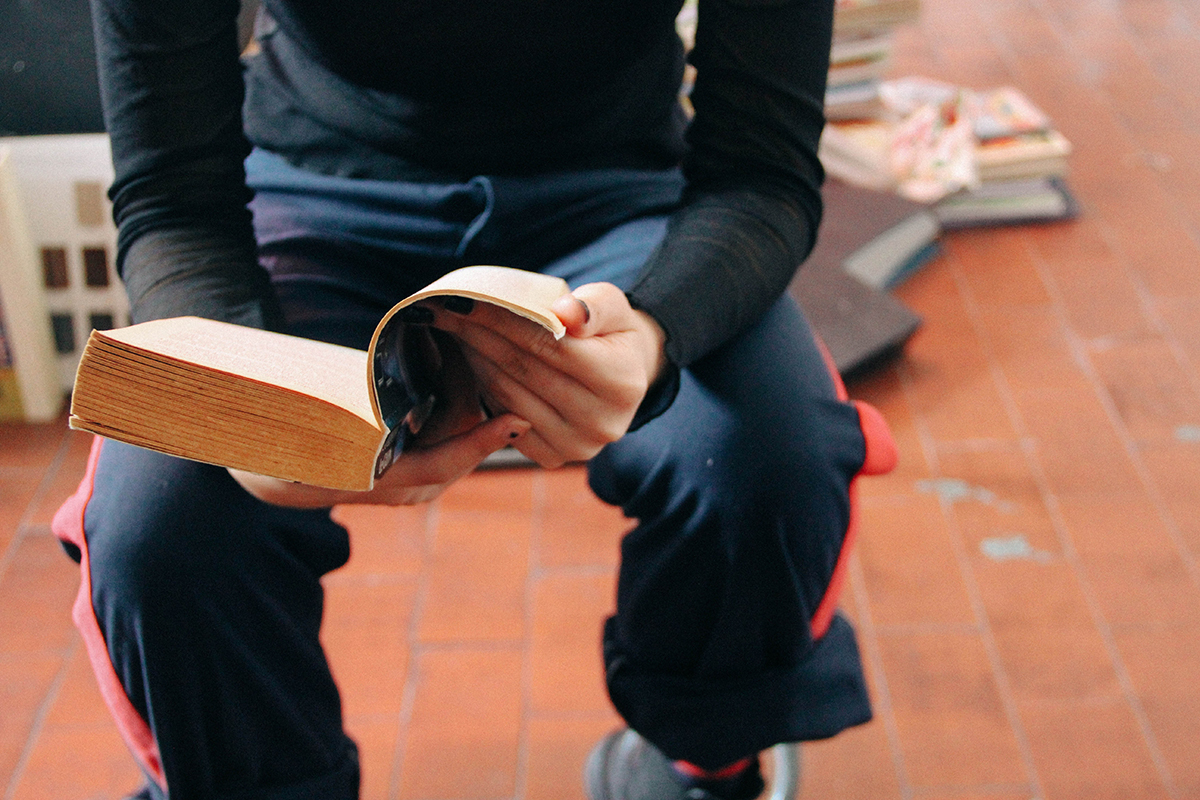
Photo Credit: Courtesy of Artist
SGABF: It seems like your approach towards art is "art as a whole" in contrary to art dissected into its various disciplines — literature, photography, film, theatre, to name a few — both visually and contextually. In that respect, what is your take on how people understand or compartmentalise art?
LL: These fields are often approached as industries with specific languages and audiences, which is not untrue. I am inspired by individuals who tend to draw from and influence many fields, like Anne Carson or Ursula K. Le Guin. The most interesting individuals and output to me are not so genre- or industry-specific. They find a language that is most true and expressive to them and manifest it in their own way. I do not want to avoid doing something just because I am not an expert at it. I have to be open to possibilities, to learning and to be vulnerable.
I feel like this question is motivated by what’s perceived to be a tendency of Singaporean audiences [laughs] When you go deeper into any culture and the arts you realise that many developments flow between fields and that there are communities of artists, writers and other positions across the board who are influenced by each other. To understand complexity, as with anything, you need repeated exposure; a commitment to be open to being challenged expands your ideas. When people understand the varied sources of inspiration behind an artist or their work, these surface barriers dividing the “compartments” can be broken down. Any meaningful enquiry resonates across all fields.
A “compartmentalised” way of thinking is sometimes a result of the way that art is made public, be it through writing or exhibitions or press releases, the terrain of institutions, art markets, journalists, and a whole ecology that establishes certain norms about how things are talked about and seen.
In terms of art writing or journalism, the structure of any outfit — their funders, advertisers, circulation count, print runs — affects their output. How developed or complex a piece is able to be are affected by things like compressed turn-around times, limited pay. That being said, sometimes specific groups gather and seem to only talk among themselves because that is how they best find their affinities, feel supported, and generate productive discourse among themselves. When specificity emerges from that it can be a good thing.
Independent presses and websites are also forms of specificity. Bomb Magazine, n+1, Glass Bead, and Triple Canopy are some web platforms with an interesting range of offerings that bleed across disciplines.
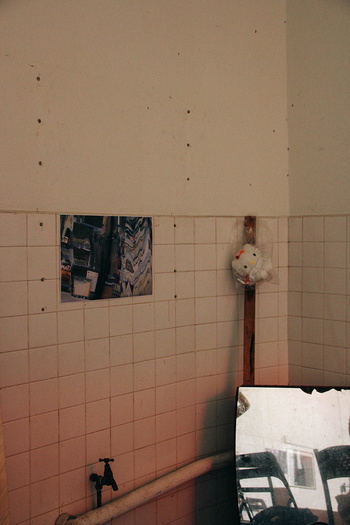
LL: There is more going on beneath the surface than I can know, or that the media can report, especially in communities very different from mine, which I glimpse from afar or hear of from friends. I am interested in new independent small-scale initiatives, ranging from spaces like our own to long-running writing and publishing groups, to independent publishing ventures like Mynah Magazine and New Naratif, to the continued working of traditional forms, which are all creating their own parameters of possibilities and audiences.
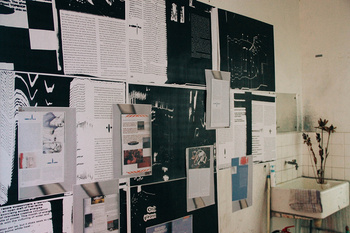
I am curious about this year’s art book fair too! While the conditions of “independence” are qualified in any compact and entangled scene, working at a scale outside of an institution or gallery provides an opportunity for those who run it to introduce different parameters to production, expectation, and audiences. It is really important for any aspiring or working artist to realise a gallery or huge institution might not at all be the place you need to do your first few showings or have the kind of attention or audience that would truly be moved by your work, or form an actual point of growth. There is a lot of money and activity going into state and commercial institutions, but they are not always sustainable or necessarily interesting. Blockbuster events are both motivated and often stymied by huge national and economic stakes. There is desperation that things will work out, and most cultural export that attains some kind of global recognition becomes a kind of golden calf.
Independent presses and websites are also forms of specificity. Bomb Magazine, n+1, Glass Bead, and Triple Canopy are some web platforms with an interesting range of offerings that bleed across disciplines.

Photo Credit: Courtesy of Artist
SGABF: In your opinion, what is the current climate of the arts and culture in Singapore, and how do you think it’s going to change in the next 10 years?
LL: There is more going on beneath the surface than I can know, or that the media can report, especially in communities very different from mine, which I glimpse from afar or hear of from friends. I am interested in new independent small-scale initiatives, ranging from spaces like our own to long-running writing and publishing groups, to independent publishing ventures like Mynah Magazine and New Naratif, to the continued working of traditional forms, which are all creating their own parameters of possibilities and audiences.

Photo Credit: Courtesy of Artist
I am curious about this year’s art book fair too! While the conditions of “independence” are qualified in any compact and entangled scene, working at a scale outside of an institution or gallery provides an opportunity for those who run it to introduce different parameters to production, expectation, and audiences. It is really important for any aspiring or working artist to realise a gallery or huge institution might not at all be the place you need to do your first few showings or have the kind of attention or audience that would truly be moved by your work, or form an actual point of growth. There is a lot of money and activity going into state and commercial institutions, but they are not always sustainable or necessarily interesting. Blockbuster events are both motivated and often stymied by huge national and economic stakes. There is desperation that things will work out, and most cultural export that attains some kind of global recognition becomes a kind of golden calf.
Money and support are not necessarily evenly spread either. I am not sure whether audiences are aware that underneath the PR images generated from shows and events and launches, art objects and events still tend to matter more than the people making and running them.

It is still an industry that is weighted against those who lack financial security to begin with, which means most power players tend to come from some kind of privilege, and diversity is always an issue. There are still inferiority complexes that manifest as narrative tropes or reductive shorthand, like the spectre of “a cultural desert”. When raised and used as a kind of narrative trump card to chastise the state, markets or their actors, without breaking forth new understandings or actual exploration of what is actually being produced in different tiers and communities, it inflicts erasures, shame, violence, self-hatred, elitism, and is overall just a dull and inadequate way of developing dialogue.
What happens a decade from now depends on what we as practitioners and workers and organisers and writers and journalists and audiences decide we want to demand from each other, and from the institutions and spaces, and how we build alternatives. I hope we choose less convenient narratives and approaches, and I hope we choose to challenge, and listen closely and at different scales, and be brave when we can.
LL: I hope it is a place where people producing across all scales, from the big guns to small-time producers sit alongside each other. I also hope people just have a really good and honest time — from the organisers to the participants. This means the fair is run well, and then it can really be the basis for people to meet, new working relationships to emerge, and communities to grow.
Luca Lum's work pivots around writing and performance, mixing genres, scales, fields of labour, and bodies. In her work, which ranges across disciplines, she focuses on genres of decipherability and transformation, double-agencies and double-binds, disclosures and exposures, and connections across scales. She is an alumnus of Writing Lab and Curating Lab 2014, and Triple Canopy's 2015 Summer Intensive in Brooklyn.
In 2016, she co-founded soft/WALL/studs, a collectively imagined and sustained studio, library, and project space for finding other ways of doing, learning, and being. In January, she and several individuals participated in a research residency and exhibition at the Cemeti Institue for Art and Society in Jogjakarta, Indonesia, as part of their programme "Maintenance Works". She is currently an artist-in-residence at the NTU Centre for Contemporary Art.
www.softwallstuds.space
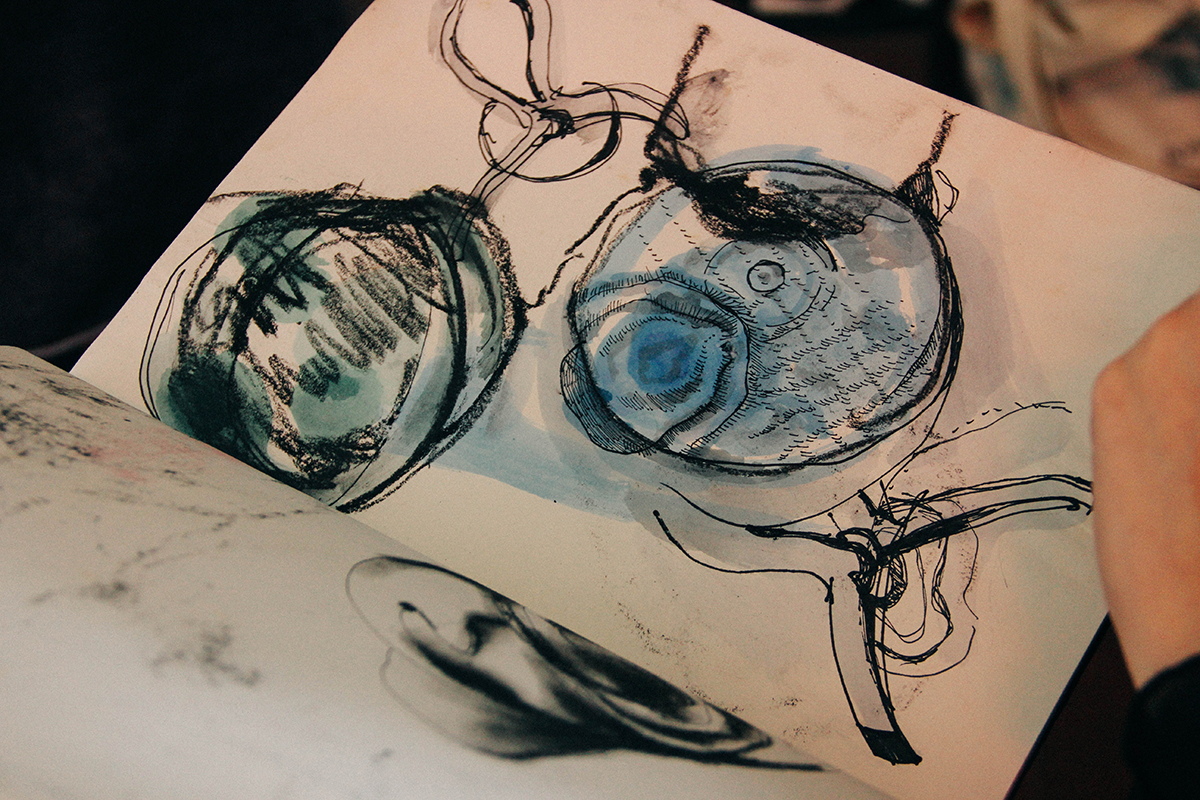
Photo Credit: Courtesy of Artist
It is still an industry that is weighted against those who lack financial security to begin with, which means most power players tend to come from some kind of privilege, and diversity is always an issue. There are still inferiority complexes that manifest as narrative tropes or reductive shorthand, like the spectre of “a cultural desert”. When raised and used as a kind of narrative trump card to chastise the state, markets or their actors, without breaking forth new understandings or actual exploration of what is actually being produced in different tiers and communities, it inflicts erasures, shame, violence, self-hatred, elitism, and is overall just a dull and inadequate way of developing dialogue.
What happens a decade from now depends on what we as practitioners and workers and organisers and writers and journalists and audiences decide we want to demand from each other, and from the institutions and spaces, and how we build alternatives. I hope we choose less convenient narratives and approaches, and I hope we choose to challenge, and listen closely and at different scales, and be brave when we can.
SGABF: What do you think the Singapore Art Book Fair should aim to achieve?
LL: I hope it is a place where people producing across all scales, from the big guns to small-time producers sit alongside each other. I also hope people just have a really good and honest time — from the organisers to the participants. This means the fair is run well, and then it can really be the basis for people to meet, new working relationships to emerge, and communities to grow.
Luca Lum's work pivots around writing and performance, mixing genres, scales, fields of labour, and bodies. In her work, which ranges across disciplines, she focuses on genres of decipherability and transformation, double-agencies and double-binds, disclosures and exposures, and connections across scales. She is an alumnus of Writing Lab and Curating Lab 2014, and Triple Canopy's 2015 Summer Intensive in Brooklyn.
In 2016, she co-founded soft/WALL/studs, a collectively imagined and sustained studio, library, and project space for finding other ways of doing, learning, and being. In January, she and several individuals participated in a research residency and exhibition at the Cemeti Institue for Art and Society in Jogjakarta, Indonesia, as part of their programme "Maintenance Works". She is currently an artist-in-residence at the NTU Centre for Contemporary Art.
www.softwallstuds.space
© Singapore Art Book Fair 2025. All rights reserved.
For further enquiries, please contact us at info@singaporeartbookfair.org.
Singapore Art Book Fair is organised by
![]()
For further enquiries, please contact us at info@singaporeartbookfair.org.
Singapore Art Book Fair is organised by

